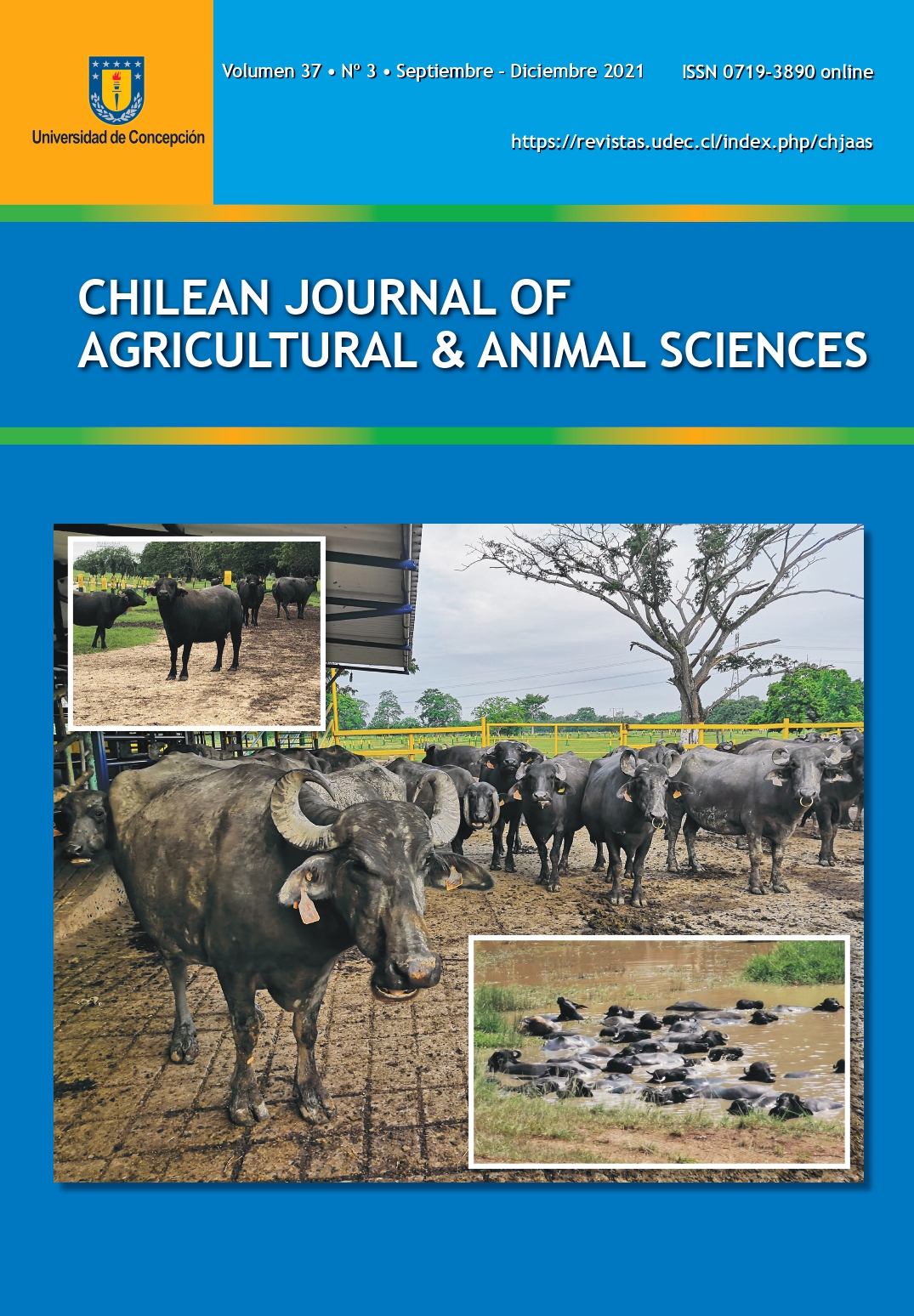BIOCONTROL CAPACITY OF NATIVE ISOLATES OF Trichoderma sp. AGAINST THE PHYTOPATHOGENIC FUNGUS Alternaria alternata ISOLATED FROM YERBA MATE (Ilex paraguariensis Saint Hil.)
DOI:
https://doi.org/10.29393/CHJAAS37-26CBML50026Keywords:
biocontrol, foliar lesions, antagonist fungi, dual culture, mycoparasitismAbstract
Phytopathogenic fungi attack many agricultural crops such as yerba mate (Ilex paraguariensis
Saint Hil.). An innovative alternative for pest control is the use of biocontrol fungi of Trichoderma
genus. The objectives of the present work were to isolate the fungal agents that cause foliar
lesions in yerba mate, and to evaluate the antagonistic capacity of native Trichoderma sp. isolates
against pathogens in this crop. From diseased plant-tissues, a phytopathogenic fungus belonging
to Alternaria alternata species was isolated and identified morphologically and molecularly.
Pathogenicity assays were done on yerba mate plants in triplicate. Superficial mechanical lesions
were made on them and the phytopathogenic isolation obtained (conidia and mycelium) was
inoculated to evaluate their phytopathogenic capacity. New dual culture methods were determined
to evaluate in vitro antagonism of Trichoderma. The in vitro biocontrol capacity of 30 Trichoderma
isolates was evaluated against the phytopathogenic isolation obtained. As a positive control, a strain
isolated from a commercial fungicide product based on T. harzianum was used. It was determined
that 18 of the 30 isolates of Trichoderma inhibited the growth of the phytopathogen A. alternata by
more than 50%, and presented statistically significant differences with respect to the positive control.
These results confirm the effectiveness of using native biocontrol isolates adapted to the climatic and
soil conditions where the phytopathogenic microorganisms are found
Downloads
Published
How to Cite
Issue
Section
Copyright (c) 2021 Universidad de Concepción

This work is licensed under a Creative Commons Attribution 4.0 International License.







